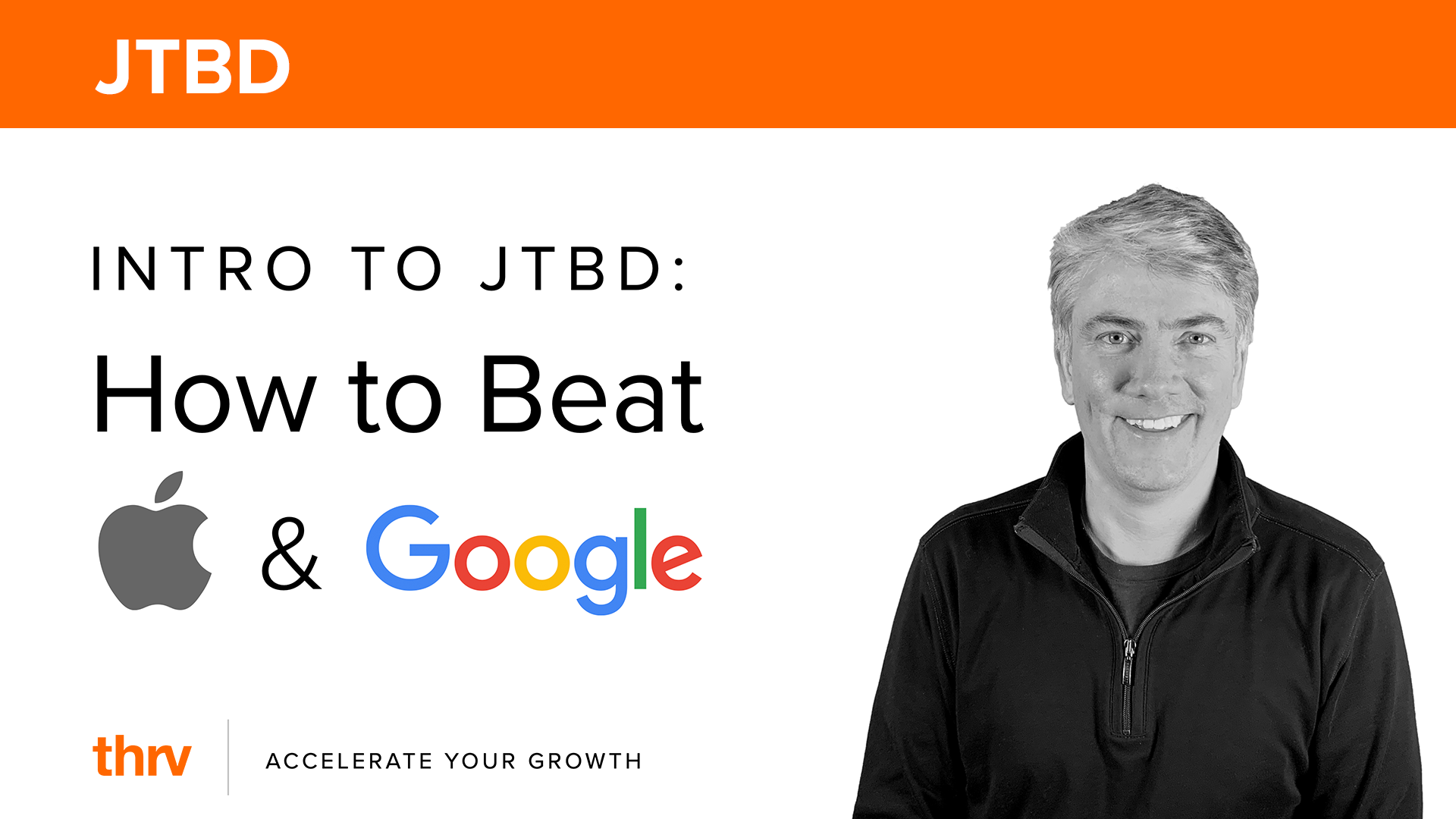August 24, 2020
The Missing Link Between Sales Capability Frameworks and Closing

As the head of sales, you’ve likely experimented with numerous frameworks for your sales team. There’s also a good chance that you’ve grown tired of the redundant message across all of them:
- “Challenger reps aren’t focused on what they are selling, but what the person they are speaking to is trying to accomplish.” - Challenger
- “People buy when they perceive a discrepancy between reality and their desired results.” - Strategic Selling
- “When we talk about needs we want to talk about them below the surface. We want needs to reflect the real pains of your buyers, consumers, users, and customers.” - NEAT Selling
Although these sales capability frameworks help create a philosophy explaining why customer needs are important, they don’t give sales teams the content or tactical direction on what the customer needs are, or how your solution satisfies them better than competitors. So what’s the missing link? How can you get your sales team to understand the customer need and use that to improve sales performance and close more deals? The answer is Jobs-to-be-Done (JTBD).
Here’s an overview of how Jobs-to-be-Done helps you fill out the content in your Challenger, Strategic, or NEAT sales pitch, aligns the sales team with the product team, and allows you to accurately evaluate the performance of your team and the success of your sales capability framework throughout the sales cycle.
1. Gain Alignment on Who the Customer Really Is
In many markets, especially B2B, the distinction between the Job Beneficiary (the person who benefits from getting the job done) and the Job Executor (the person who does the work to get the job done) is critical to understanding the needs of the person you are talking to. The executor is part of the solution to getting the job done. New solutions will be developed to help the beneficiary get the job done on their own without the current executor. If your solution puts the Job Executor’s role at risk, bring up the fact that she can now allocate time to a higher-order task.
One example of a solution targeting a Job Beneficiary is cloud-based applications. They have enabled companies to reduce or eliminate specialized IT managers (Job Executors) so that non-technical employees (Job Beneficiaries) can benefit from secure data use without having to rely on IT. In medical markets, new medical devices have been developed to allow a patient to obtain a blood sample on their own without a specialized phlebotomist.
Once you have defined your target customer as the Job Beneficiary or Job Executor, you can better understand who your solution is really for, target them in your prospecting, and tailor your sales pitch.
2. Define the Ultimate Customer Goal (or Job-to-be-Done)
Connecting your product to the goal of your customer is a fast way to determine the value they want to get from your solution. Framing it as a job-to-be-done is helpful because it ensures that you focus on their goal independent of technology or a given solution.
For example, you don't want to sell AI. You want to sell how AI helps your customer achieve their goal, which has nothing to do with AI. They had this goal before AI and they will still have it when the world is hot on some new tech.
What customers want is to be understood. They want you to tell them that whatever problem they’re experiencing -- whatever goal they want to achieve -- your product is going to do what they need it to do. By getting to the heart of their goal, you’re able to have a more natural, empathic conversation during the sales call. Customers are more likely to open up and discuss their unmet needs. You are there to empathize with their struggle and provide real value.
Tip: Once you’ve discovered the job-to-be-done, share a similar success story. Focus on developing a hero (previous customer) who overcame the same struggle. Highlight how you helped them do it faster, more accurately, and worry-free. Include metrics and proof points of how you helped this customer get the job done.
3. Avoid the Feature-to-Feature Comparison Trap
When a product team strives for feature parity with a competitor, they are in the follower's position. If you've ever been on a team that is playing feature catch-up, you know it's like bailing water out of a leaky boat: every time you release a feature and think your work is done, your competition releases something new, racing ahead of you yet again.
Microsoft thought they caught up to the iPod by including all of its features in the Zune; Apple launched the iPhone. Microsoft tried to catch up again with the Windows Phone, but playing catch-up leads to failure.
Feature-to-feature competitive analysis often fails to identify new competitive threats that can emerge from a different category of products or services. Encyclopedia Britannica thought they were competing with other collections of books and failed to realize how CD-ROMs (and eventually the Internet) could upend their business and lead to their failure.
If a customer asks if you have a particular feature, guide the conversation back to the unmet needs they have and the job they need to get done. Keep the conversation grounded in what’s most important to them, and the features will become less important.
4. Create a Successful Alignment with the Product Team
Developing a jobs-to-be-done framework for your teams is critical in not only providing your sales team with the right structure to close deals, but it also provides them with the right language to collaborate more productively with the product team.
Sales and product teams have long been on opposing forces within an organization. Sales is unsatisfied with the lack of new features they can sell and the product is unsatisfied with the lack of support and quality feedback they are getting. It’s an age-old battle that will continue as long as features stand at the center of business development, product development and selling.
However, when teams are aligned on the Job-to-be-Done, there is more clarity on what provides real value to customers. Creating a JTBD product development strategy allows for product teams to build a customer-focused roadmap, and it gives sales teams a more guided framework on how to sell the product. Instead of going back and forth on customer demands and new features, sales teams using JTBD will be able to validate the job, and product teams will have more data that falls in line with their roadmap.
Evaluating Your Sales Capability Framework
Now that you know what to include in your sales pitch and how to align your teams, how can you track the progress and measure the success of the JTBD sales capability framework? Obviously there are the financial and conversion-based performance metrics like monthly sales growth, lead conversion rate, customer acquisition cost, and average profit margin, but there are other indicators to track that are just as important. Start by asking yourself a series of questions:
- What role is the marketing team playing in helping your sales people? What about the leadership team? Is there much collaboration going on?
- What kinds of tools or software are your sales teams using?
- Have members of your sales team taken jobs-to-be-done training courses? Do you even offer training courses? If so, how did they perform during these courses? Is there any correlation between their course performance and their field performance? If you're looking for ways to be more innovative with your sales training, consider setting up an innovation training program first. Check out Playing Lean's guide to get ideas for building a sales curriculum, find good training examples and keep your students engaged.
- How are you measuring customer satisfaction? Do you have a customer satisfaction baseline to compare results to? Are customers getting their job(s) done?
- Do your key performance indicators (KPIs) differ for each sales role? A sales director will have different metrics than a sales rep.
- What industry are you in and do your KPIs, sales competencies and metrics reflect that industry?
JTBD is not a strategy reserved solely for product teams. Implementing JTBD across sales, product, and marketing teams allows your entire organization to develop a cohesive language that is customer-focused and memorable. If you want to learn more about how to train your teams on JTBD, contact us today and try thrv for free.
Posted by Jay Haynes View all Posts by Jay Haynes





